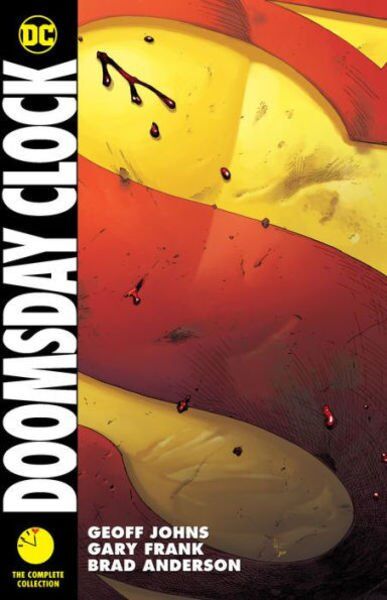COMIC BOOKS: Doomsday Clock
Published 10:00 am Saturday, March 27, 2021

- Doomsday Clock
It’s hard to tell just how good a story may be based on on-going issues of a comic book.
Many of us have been affected, spoiled, maybe even ruined, by the concept of binge watching. We no longer have the patience for episodic viewing. Look at the number of social media complaints surrounding the episodic release of shows such as “WandaVision,” “The Mandalorian” and “The Falcon and the Winter Soldier,” all Disney+ series that released/release each episode one week at a time.
The beauty of episodic viewing is it heightens the thrill of a surprise, a cliffhanger sharpens the suspense, it increases analytical thinking about the series as well as chatter with friends. People fill in the blanks of character and plot possibilities between each week.
But sometimes episodic installments – be it for a TV series or a comic book – don’t work as well. The episodes/issues are so interrelated that it’s like reading a novel dished out one chapter at a time. It may be a great novel but it doesn’t compel a reader to think about or even wait for the next chapter.
That’s how I felt about the “Doomsday Clock” during its long roll out of 12 issues.
But it’s a great read with all of the issues collected as a trade paperback edition. A reader can read the story arc in its entirety instead of the issue-by-issue drip of monthly installments. Readers will know immediately if they are interested in a monthly title but it can be six months to a year before they know if the full story works.
“Doomsday Clock” is an ambitious undertaking. It is a “Watchmen” sequel that mixes the worlds of the comic masterpiece with the regular DC Universe.
Yes, Dr. Manhattan and Superman meet. Batman and Rorschach’s heir meet.
DC revisited “Watchmen” a few years ago with a series of new adventures for the characters. That was daring because “Watchmen” is no ordinary story.
After all, it isn’t just any comic book that is included in lists such as Time magazine’s look at the greatest literature of the 20th century; yes, a comic book made the cut along with Hemingway, Joyce and Fitzgerald. Alan Moore and Dave Gibbons’ 1980s “Watchmen” entered such heights.
“Watchmen” is a masterpiece and a classic. So, any fiddling with that, especially without Moore’s involvement, has been tantamount to comics sacrilege to some readers.
“Doomsday Clock” also faced another challenge. It was doling out its monthly issues while HBO was airing weekly installments of its critically acclaimed “Watchmen,” also a sequel to the original comic series. “Watchmen” was dynamic television that delved deep into real-world social and racial issues. “Doomsday Clock” pales by comparison.
“Doomsday Clock” looks at the “Watchmen” world several years down the road from the original story. A time when “Watchmen” world collides with the regular DC Universe.
“Doomsday Clock” is interesting; the premise intriguing. But it is not a new masterpiece. Doesn’t mean it isn’t good, actually, it’s really good, but “Watchmen” inspired so many great comics which have in turn inspired more great comics that it’s hard to tell.
To younger readers, “Watchmen” may seem stilted compared to more contemporary comics, sort of how some people feel about “Citizen Kane” compared to more recently released movies. It’s a classic but is it really the greatest of all time?
Now that it’s available as a complete edition, “Doomsday Clock” has something more in common with “Watchman.” Something a younger generation of readers forget, or may not even realize.
The original “Watchmen” has been available as a collection for 30 years. For more than three decades, readers can sit down and read “Watchmen,” in its entirety, in one sitting.
But in the 1980s, before the collections, before the Time lists, etc., “Watchmen” was a monthly title, a mini-series that came out issue after issue during a year-long run.
And it was worth every second of the wait.





